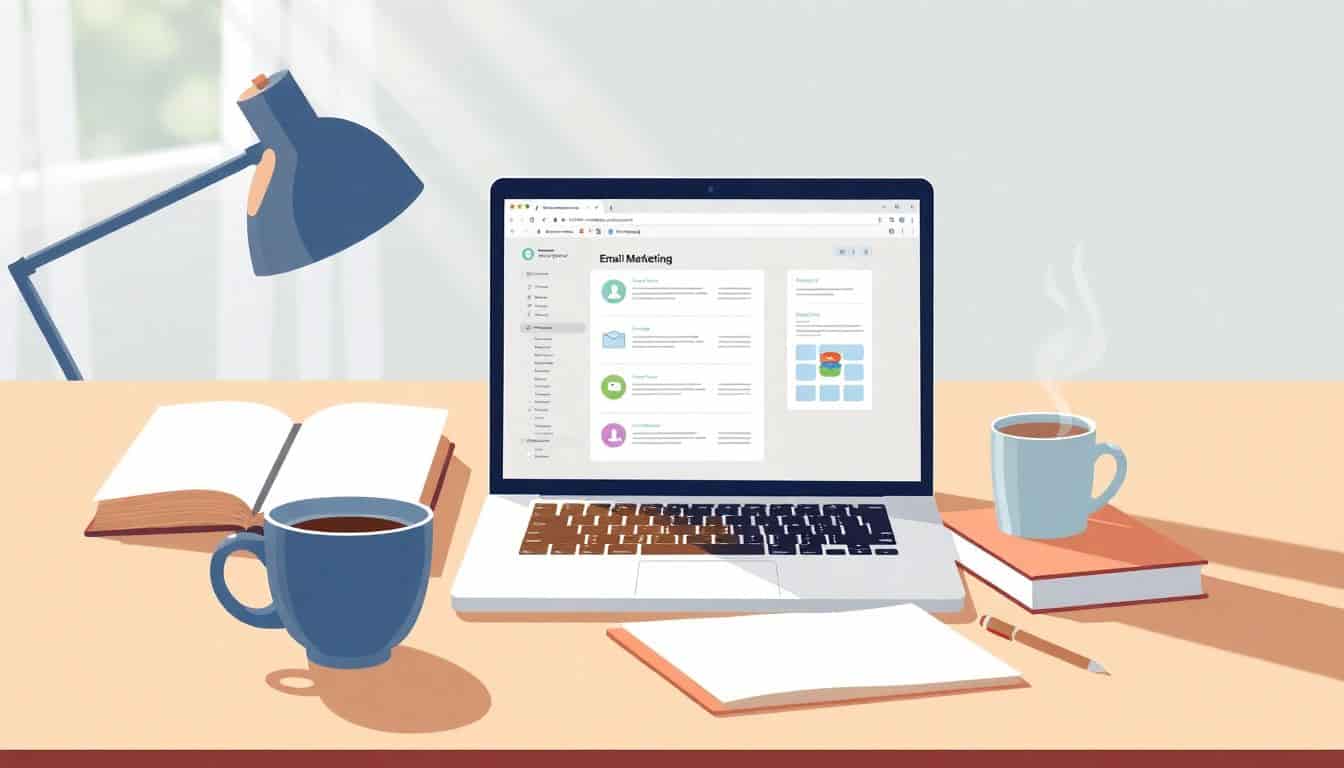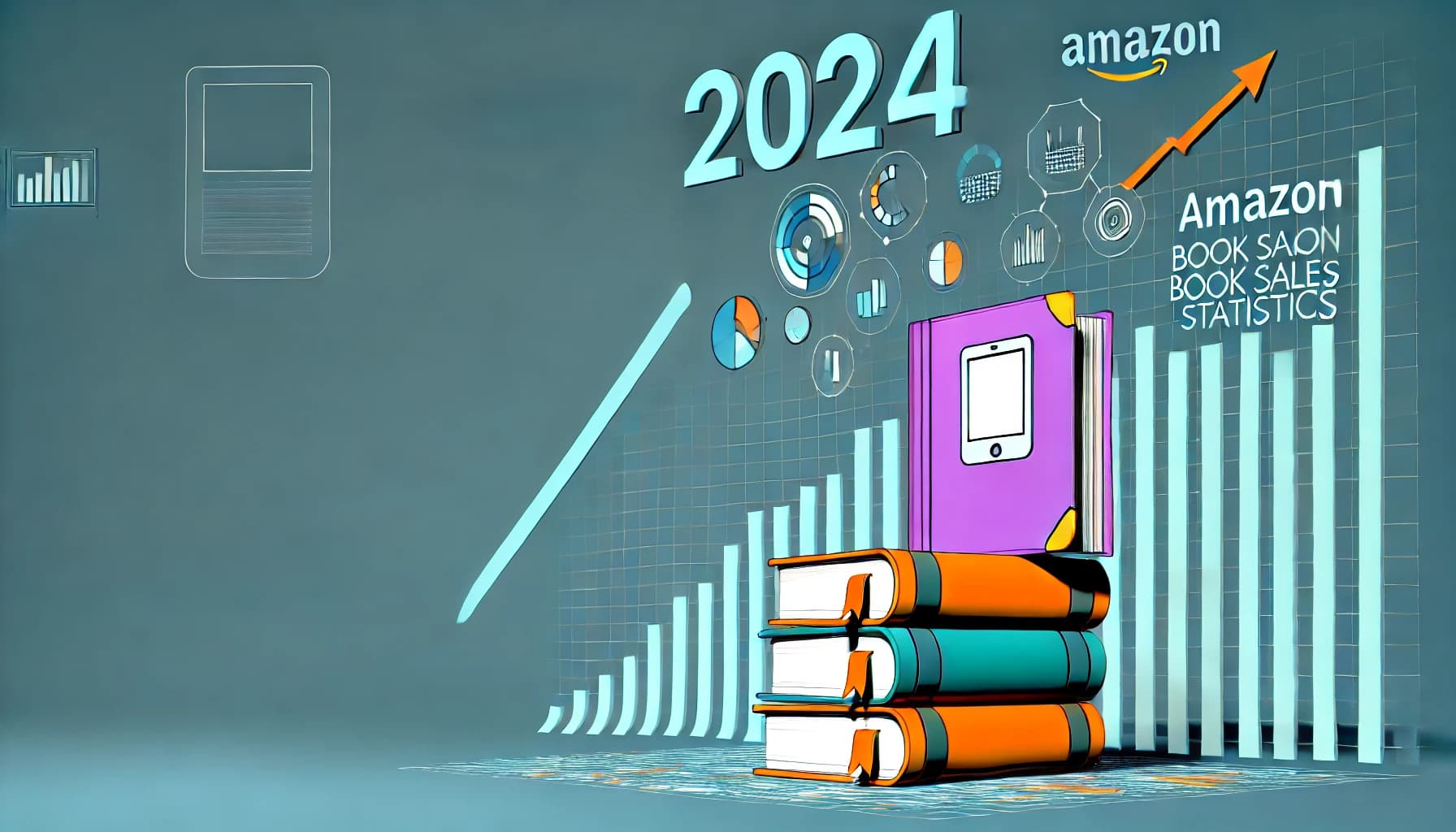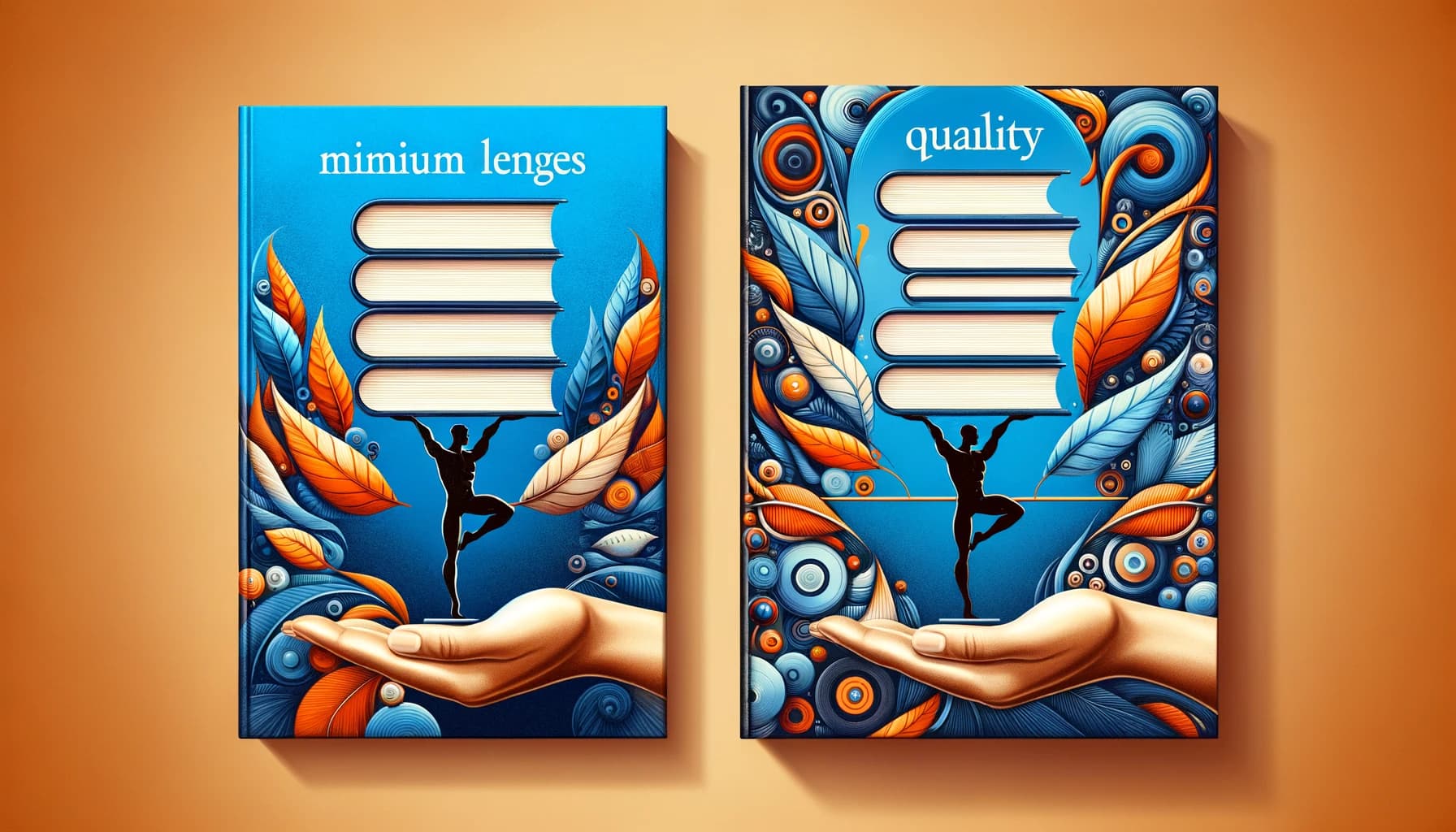Table of Contents
I get it—email marketing sounds boring or overwhelming, especially when you’re busy writing your book. Maybe you’ve tried it and got nowhere, or perhaps the idea itself feels draining. You’re not alone!
But stick with me here. With a straightforward game plan and some tried-and-tested tips, you’ll finally get email marketing working smoothly and selling more books than ever before.
Here’s a quick peek at what we’ll cover, step-by-step, to get you there.
Key Takeaways
- Choose an email service tailored to authors, like MailChimp or ConvertKit, focusing on ease of use, affordability, and integration with your website.
- Grow your subscriber list organically by offering valuable freebies, such as exclusive content or helpful guides, and promoting your newsletter consistently.
- Segment subscribers based on their interests or genres, allowing targeted emails that increase engagement and book sales.
- Write short, catchy email subject lines to capture attention, and include personal touches or stories to build reader connections.
- Regularly track your email open and click-through rates, adjust content based on results, and use A/B testing to improve performance.
- Offer subscriber-only perks like early access or discounts, and include clear calls-to-action linking directly to book purchase pages.
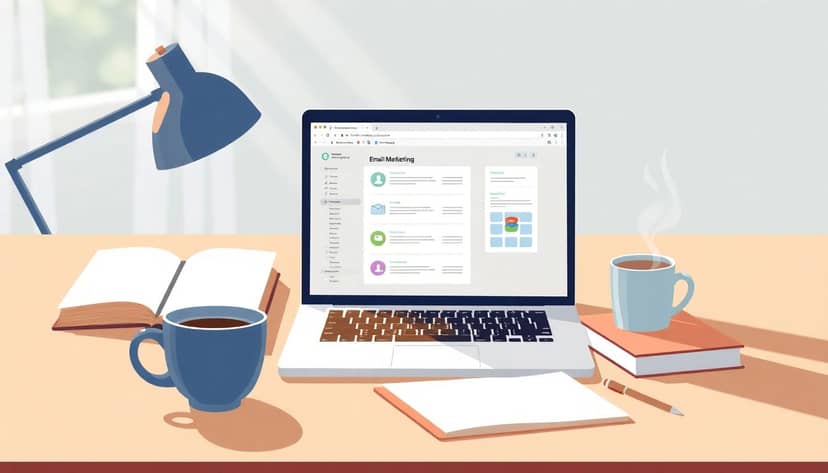
Step 1: Pick the Right Email Marketing Service for Authors
If you’re serious about building a connection with your readers, the first step is choosing an email marketing service that’s affordable, easy-to-use, and tailored for authors. Services like MailChimp or ConvertKit offer features that allow authors to create visually appealing emails, segment audiences, automate sending times, and track valuable metrics like open and click rates.
When deciding, look at factors like pricing plans that match your subscriber volume, ease of use, and availability of automation (for example, welcoming new subscribers or telling readers about upcoming book launches automatically). ConvertKit is particularly popular among authors because of its straightforward, no-fuss interface and easy-to-understand reporting.
Also, don’t forget to check if the email provider integrates well with your author website or blogging platform. Popular website builders for authors like WordPress or Wix typically offer seamless integration options.
Finally (and possibly my favorite tip), check if the email service provider makes it easy to offer lead magnets like free chapters, guides, or short stories to boost your subscriber numbers. Speaking of lead magnets, having good ideas and materials to offer can be crucial—check out these useful winter writing prompts if you’re struggling with ways to entice your readers.
Step 2: Build Your Author Email List the Right Way
Building your list isn’t about buying email addresses—in fact, that’s a huge no-no. Your goal is creating a community of readers who genuinely look forward to your emails. Instead of buying lists, grow your email database organically by enticing visitors on your website or followers on your social media profiles to subscribe voluntarily. Remember, quality matters more than quantity.
One proven way is offering opt-in freebies—also known as lead magnets—to encourage readers to sign up. Some common lead magnets include exclusive short stories, helpful how-to guides (like a short ebook on how to get a book published without an agent), templates, checklists, or character sketches.
Your subscription form should be visible, easy-to-use, and quick to fill out. This means asking only for the information you’ll actually use—typically just name and email address. Offering bonus content or special updates via your email newsletter can further encourage sign-ups.
Don’t be shy about reminding readers across platforms that subscribing ensures they’ll be the first to hear about new book releases, author events, or limited special deals. Regularly remind your followers through social media posts, author bios, and even your email signature. Consistent promotion of your newsletter builds trust and steadily grows your subscriber base.
Step 3: Organize Your Email Subscribers by Their Interests
Not all readers want the exact same thing from you—which is where segmentation comes into play. Segmentation sounds fancy, but it’s just a way of dividing your readers into groups based on what interests them most.
You might organize lists by genre preferences (fantasy lovers, crime-thriller fans, historical fiction buffs, etc.), by engagement level (frequent openers vs. occasional readers), or by how subscribers found you (social media, your website, specific campaigns, and so forth).
For example, if you write multiple types of books, subscribers who opt-in after downloading your mystery short stories should get more mystery-related emails, rather than general messages about your non-fiction work. Simple segmentation like this makes your emails more relevant, leading to higher open rates, fewer unsubscribes, and ultimately better book sales results.
Top email marketing services allow you to create segmentation easily. Usually, you can tag subscribers based on clicks within emails, allowing you to learn about and act on their interests almost instantly.
Taking the time to segment subscribers is worth it. Research shows segmented emails have significantly higher open rates—up to 50% more—compared to non-targeted emails, meaning your readers stay happier and more engaged in the long run.
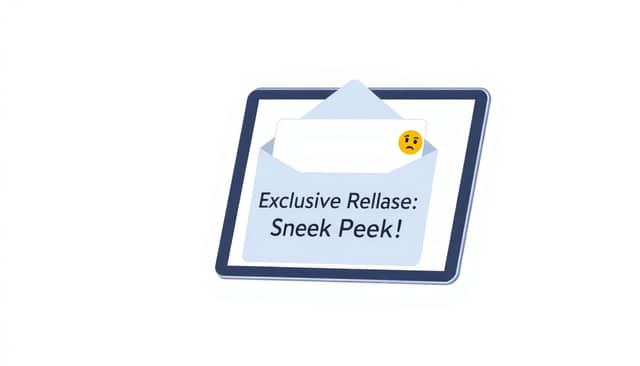
Step 4: Write Emails that Actually Interest Your Subscribers
Yes, it’s that simple—your emails have to offer something readers actually care about, or they’ll end up ignored or deleted.
So, what’s the trick to emails people really open?
The subject line is your first impression, and according to Porch Group Media, 47% of recipients open emails based solely on the subject line.
Keep it short, ideally around 44 characters—for example, “Free New Chapter: Sneak Peak Inside!” or “New Mystery Release: Ready to Guess Whodunit?” because shorter subject lines are clearer on mobile devices.
Adding the word “video” can increase your clicks significantly—in fact, emails that say “video” get 19% more opens and 65% more clicks.
And using emojis isn’t silly—studies show emojis have a 39% average open rate.
Next, make sure each email is relevant to your audience by using your segmented lists (remember step 3?).
If your readers joined after downloading your guide on writing dystopian fiction, send them updates and tips related to dystopian stories rather than unrelated book sales or generic content.
Add your personal touch too—tell short anecdotes about your author journey, funny mistakes you’ve learned from, or exciting news.
Personal stories build trust and show readers there’s a real human behind that keyboard.
Step 5: Track Your Email Results and Make Improvements
Tracking email results sounds boring, I know, but it’s how you figure out what’s working and what’s not.
Email platforms provide helpful insights like open rates, click-through rates (CTR), and even conversions to sales.
The average open rate is around 25.10%, so aim to match or beat this percentage.
An email performing way below this is probably missing something—maybe your subject line wasn’t strong enough or targeted the wrong segment.
Look at click-through rates specifically since the goal isn’t just to have readers open the email—you want them to actually take action.
If CTR is low, add more engaging elements like videos (surprise: videos triple your click-through rate!) or interactive features like polls or quizzes to make your readers actually want to click through.
You can also test different subject lines, sending times, and content styles using A/B testing.
For example, send out two versions of the same email with slightly different subject lines to smaller groups, and whichever performs better goes out to the rest of the list.
This gives your emails a better shot at success every time you hit send.
Step 6: Turn Subscribers into Readers and Sell More Books
Email marketing’s ultimate goal is simple: you’re aiming to transform subscribers into actual readers who buy your books.
Emails focused on sales should highlight clear benefits—something readers feel they’re genuinely getting value from.
For example, offer exclusive early access, limited signed copies, or release-day discounts only for your subscribers, making them feel special and appreciated for being part of your email list.
Your readers will respond positively to clear, persuasive copy that creates urgency like “Get Your Exclusive First Edition Today!” since urgent subject lines boost your opens by 22%.
Including direct links to purchasing pages (your site or Amazon page) and strong calls-to-action helps convert readers more easily.
Keep in mind the data—50.7% of users make at least one monthly purchase directly because of email marketing.
Also, cart abandonment emails deliver the best return, reminding readers who clicked through but didn’t buy that they’re missing out—and they’re surprisingly effective at nudging fence-sitters towards a purchase.
When done correctly, an email list for authors isn’t just a list of emails—it’s a powerful, book-selling tool that brings readers closer to you and your stories.
If you want more practical insights into creating a compelling book presentation, check these expert tips for creating engaging back-of-book cover content to further improve your reader conversions.
FAQs
Authors should choose an email service offering intuitive email design tools, list segmentation, easy integration with author websites, performance tracking, reliable deliverability, automation capabilities, and affordable pricing plans suitable for different subscriber tiers.
Use a clearly visible opt-in form on your author website, provide readers with enticing offers like a free chapter, short story, or book promo, and regularly encourage newsletter subscriptions via social media posts and book events.
Authors can segment lists effectively by asking subscribers their preferred genre or interests upon sign-up, reviewing which content they click most frequently, and using email service premium analytics features to track subscriber engagement and behaviors.
Email content that boosts sales includes exclusive sneak peeks, special discounts, new book announcements, annotated excerpts, reader testimonials or reviews, limited-time bundles, and direct purchase links promoting urgency and clear calls-to-action.
